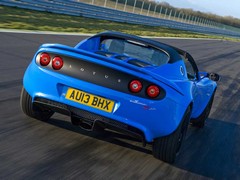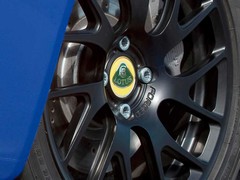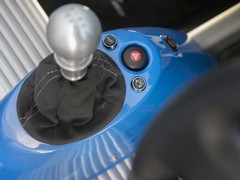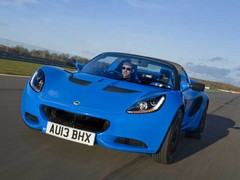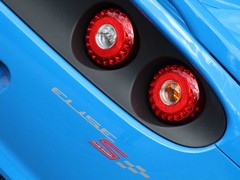Lotus Elise S Club Racer: Review
Forgotten with the 4C's arrival, the Club Racer shows the Elise at its enthralling best
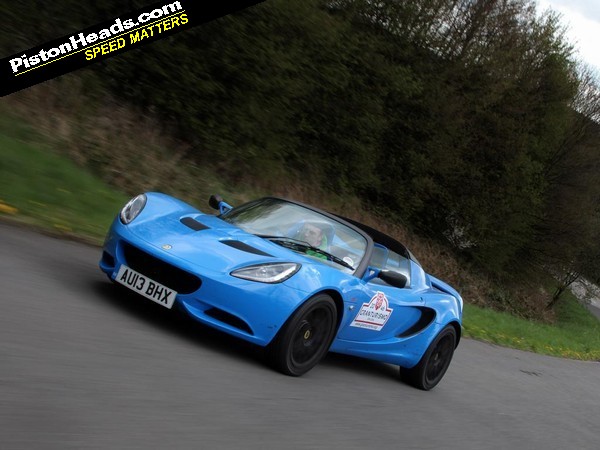
As it stands you can slice as much as 28kg out of an S if you go all-in on the Club Racer package, including dealer fit post registration options like the lightweight battery (-5.4kg) and ‘track only’ Toyota Racing Development airbox, filter and exhaust, worth another 2.4kg off the scales. To get that full weight saving you’ll have to also spec optional £1,200 forged wheels saving 1.5kg too, the standard car trimming a smidge over 19kg out of the regular S with its ‘shower cap’ roof, interior stripped of noise insulation, carpets, radio and – if you’re really dedicated – airbags. Even the mud flaps and badges are pruned.
This is hardcore
An admirable expression of core Lotus values then. Or it would have been if our test car hadn’t arrived with 15kg and £1,100’s worth of air-con and a 9.1kg/£1,100 Comfort Pack reinstalling the deleted stereo, floormats, insulation, mud flaps and central locking. Beware then the Elise owner claiming he’s a true disciple of Chapman in his Club Racer if he isn’t blue with cold/sweating in the sunshine (delete according to season) and boasting about how good the new Miley Cyrus album sounds on his fancy Alpine stereo…
It does seem a bit ironic that the Club Racer lets you pretend you’re being all hardcore before paying extra to have all the stuff that’s been stripped out of it put back in. Pays your money though.
Let’s put the scales and calculator away and concentrate on the real essence of the car though. Which is, frankly, the same as it’s always been but facing a new and more exotic pretender to its lightweight crown in the form of the carbon-tubbed Alfa Romeo 4C.
Magic weave
Setting the emotional and marketing pull of that magic weave aside for a moment the 4C is a lot closer to the Elise in spirit than Alfa Romeo – which apparently tested the concept in Elise-based mules – might care to admit. The fancy sounding tub of the 4C only buys a few kilos over the Elise’s and, as previously discussed by Harris, has led to cost cutting in other areas (mainly the rear suspension) that probably have a greater impact on the driving experience than the pose value of its building materials.
A good excuse to get back in an Elise then, those familiar fat aluminium sills and artfully integrated extrusions across the dash are both functional and aesthetic reminders of what’s beneath. It feels more confident in its minimalism than the 4C and much more cohesive in style too. Neat shorthand for the driving experience too, which is much, much more resolved than the Alfa. As it should be; it’s had getting on for two decades worth of development to get this far.
By this point you’ll probably already know if you’re likely to get on with an Elise or not and the core values are very much intact. That tiny wheel with its evocative badge at its centre really plucks the heartstrings and the little Lotus is one of those cars that just manages to feel like an event every time you drive it. Not bad for a car with an engine derived from that in the Prius.
Zing
Supercharged to 220hp, it’s regained at least the on-paper potency of the old SC with the previous zingy and characterful 2ZZ-GE 1.8. Curse the emissions laws that killed that engine and its high-revving ways; in normally aspirated form it was a challenge – albeit a rewarding one – to keep on the boil and in screaming supercharged trim was genuinely thrilling. Lotus has done what it can to make the new engine sound and feel as exciting as a supercharged mid-engined sports car with 240hp per tonne should do but there’s no escaping it sounds a little flat. And those one-two-three shift lights appear just about where the old engine was really starting to kick off.
In isolation it’s absolutely fine and pulls hard and fast. Those with rose-tinted memories of the old engine will find it hard to be enthused though. Such is the way of it though; Toyota’s need to meet ever more stringent emissions regs figure higher than Lotus’s need for a charismatic power plant and the choice was not theirs to make. Ho hum.
In all other respects the Club Racer is an out and out delight though. An Elise is never going to appeal to those chasing impressive numbers but as a sensory experience it remains unique, and shows up just how badly Alfa needs to finish the job calibrating the chassis and controls on the 4C before it can really compete. Where the Alfa throws a snatchy throttle, oddly weighted steering and an alarming lack of composure on bumpy roads at you the Lotus oozes confidence and predictable linearity. The wheel wriggles and writhes in your hands, load through the front tyres felt as the tensing and relaxing in the muscles and tendons in your forearms. Pedal weighting, throttle response, gearshift throw – all are balanced and consistent in relation to each other and it’s equally beguiling on a twisty back road as it is on a fast track like Spa-Francorchamps where we were lucky enough to drive it.
It’s less about the way the Elise builds speed than the way it carries it. Corner entry will typically be nose-led but bide your time and attitude can be precisely and accurately trimmed with small adjustments to throttle and steering. You get plenty of warning if you’re approaching the limits of one end or the other, corrections typically instinctive and dealt with before you’ve registered them. Ambitious entry speeds on fast corners on track can be countered with a lift and a flash of a correction while tighter corners allow you to rotate the car around its central axis once past the exit with that classic track instructor’s analogy of imagining a piece of string tie to the throttle pulling the steering wheel straight. Lovely stuff, benefits of the minimal kerb weight including the ability to lap all day on the same set of tyres you drive home on and with discs and pads untroubled by the workload.
Same old same old then, and nowt wrong in that. It’s easy to cynically pick apart the ‘Club Racer’ package and dismiss the supposed weight saving benefits with closer scrutiny but at heart the Elise is what it’s always been; minimal, fun and perhaps more relevant than ever. And if it offers a wake-up call to Alfa about finishing the job on the 4C then all the better.
A lap of Spa in the Elise S Club Racer
LOTUS ELISE S CLUB RACER
Engine: 1,798cc 4-cyl, supercharged
Transmission: 6-speed manual, rear-wheel drive
Power (hp): 220@6,800rpm
Torque (lb ft): 184@4,600rpm
0-62mph: 4.6 sec
Top speed: 145mph
Weight: 924kg
MPG: 37.5mpg (NEDC combined)
CO2: 175g/km
Price: £35,600 (Basic, £39,000 as tested comprising Comfort Pack with stereo, floor mats, central locking and sound insulation £1,100, air conditioning £1,100, forged Sport wheels £1,200)
Gassing Station | General Gassing | Top of Page | What's New | My Stuff






